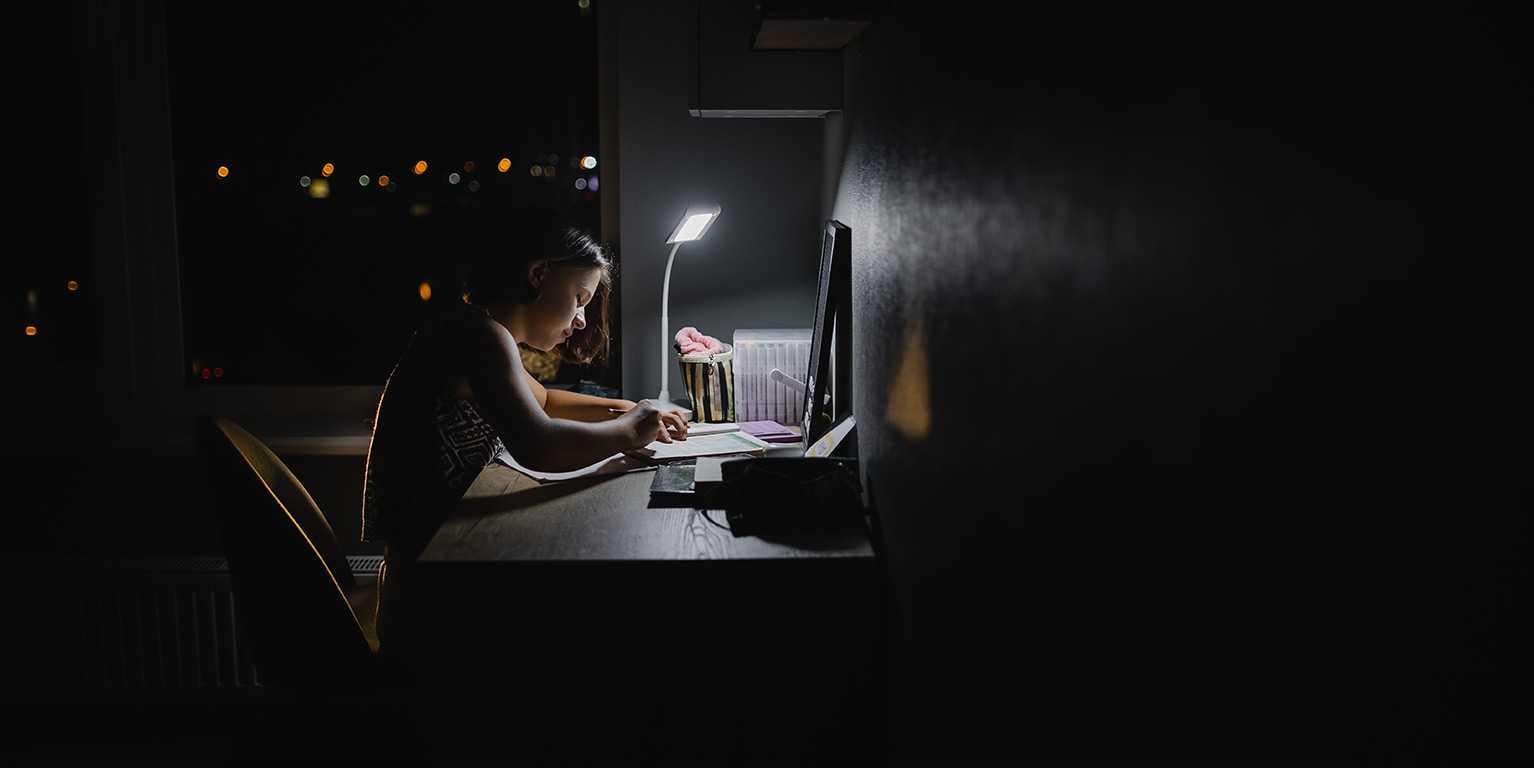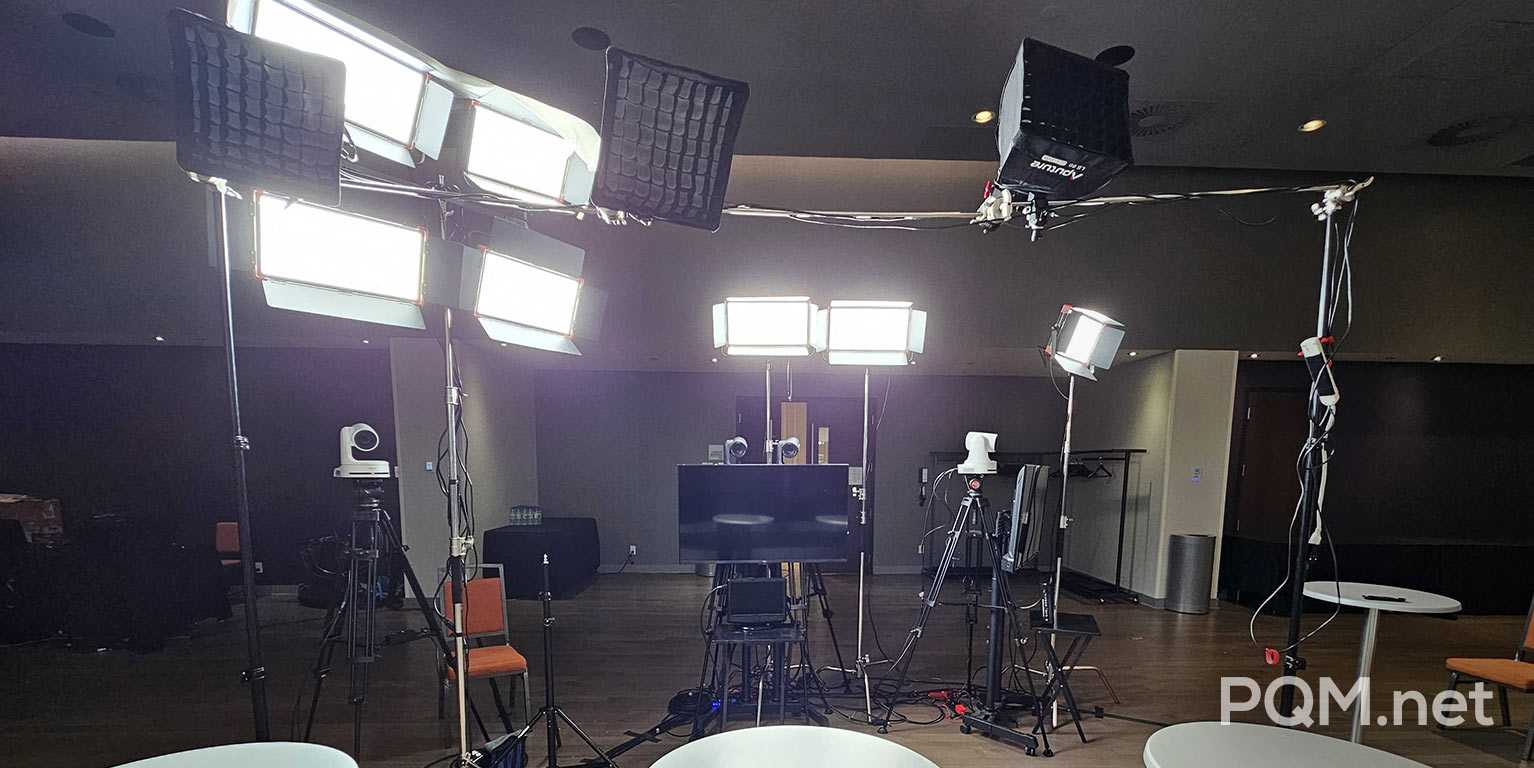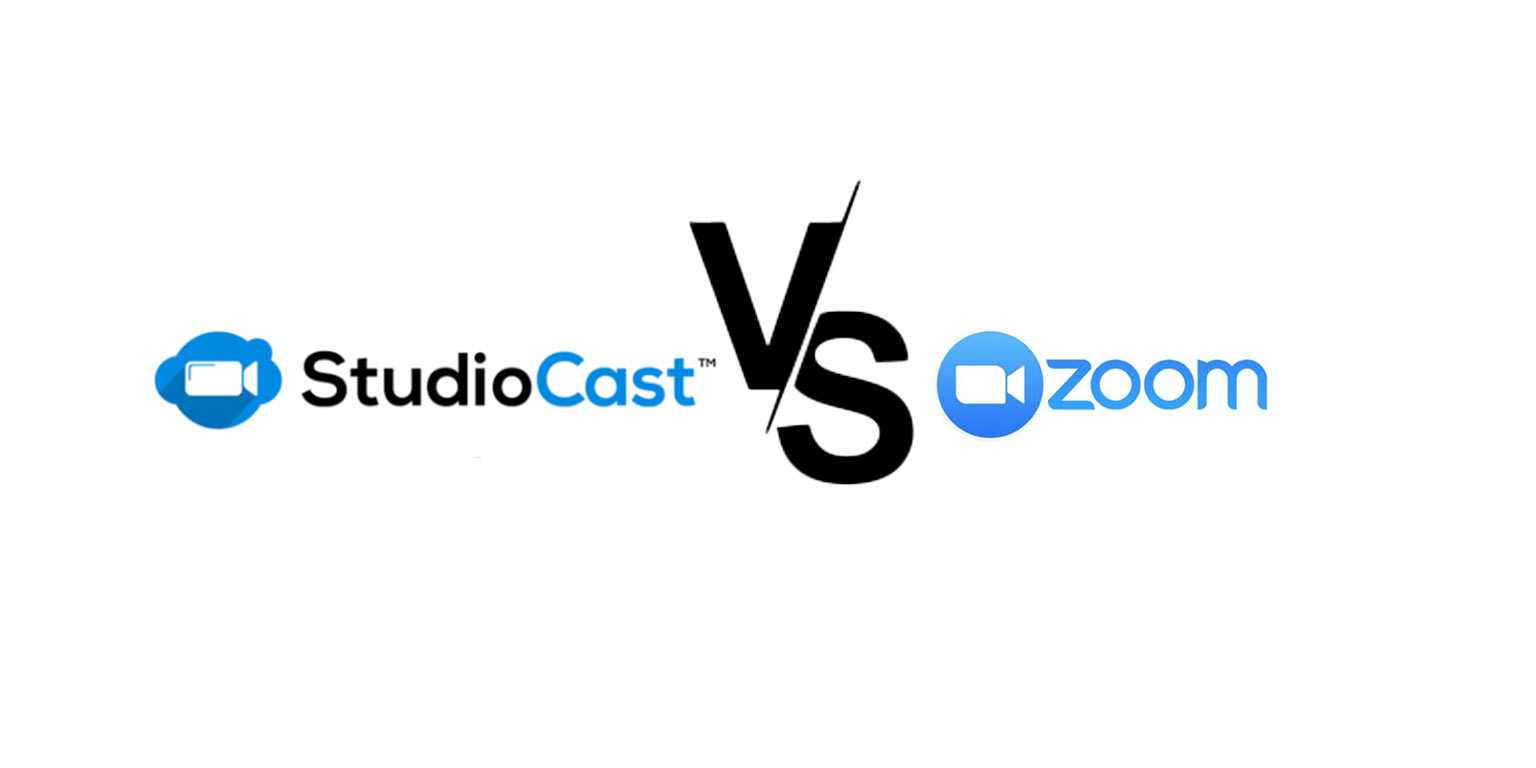Strategic Positioning of Lighting for Webcasts
To achieve exceptional image quality during a webcast, the position of your light sources is just as important as the lighting itself.
Thoughtful positioning can help eliminate unwanted shadows, minimize reflections, and highlight the presenter's face.
This is where two-point and three-point lighting setups come into play.
Two-Point Lighting Setup
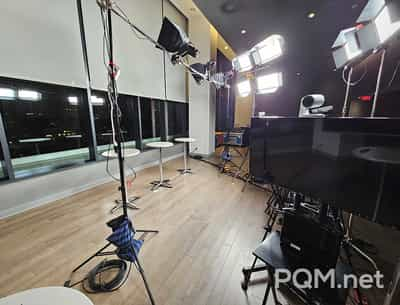
In this configuration, two light sources are placed on either side of the camera at different angles.
This allows for balanced lighting and wraps the subject in flattering illumination.
- Key Light: More intense, it serves to illuminate the subject primarily.
- Fill Light: Less powerful, it helps soften shadows produced by the key light.
Three-Point Lighting Setup
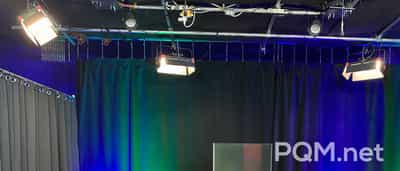
This technique adds a third source, the backlight, which separates the subject from the background and adds depth to the image.
- Backlight: Placed behind the subject, this source creates a halo effect and avoids the "flat head" look.
Other Tips for Optimized Lighting
-
Using accent lighting can add stylistic touches to your webcast.
-
Adjust your computer's brightness so the screen doesn't wash out your face. For more impact, consider the direction of the light.
-
Light coming from above can create a dramatic mood, while front lighting makes the subject more accessible. Lighting isn't just about the amount of light but also how it's used to visually sculpt the webcasting space.
Experiment with different arrangements to find the best balance between the shadows and highlights in your environment.
Ready to discover how to choose the lighting equipment best suited to your webcasting needs?
Characteristics of Effective Lighting Systems for Webcasting
Choosing the right lighting equipment is essential to ensure perfect illumination for your webcasts.
With the right combination of light sources, you can significantly improve the quality of your videos and thereby capture your audience's attention.
Let's take a look at the features to look for and the types of lighting available.
We're warning you! It's technical jargon.
However, our experts are here to explain everything to you on video without any obligation.
Ring Lights and LED Panels
- Home-Conference Type: Ring lights are prized for their ability to provide even, shadowless lighting, particularly well-suited for close-up facial shots.
- Professional Type: LED panels, on the other hand, offer a large lighting surface area, which is ideal for wider broadcasts or when multiple people are present.
The Importance of Color Rendering Index (CRI)
A high CRI is crusial
It refers to a light source's ability to accurately render colours compared to natural daylight.
Ideally, look for a CRI above 90 for optimal colour quality in your webcasts.
For more information on CRI, the website FlexFireLeds offers a detailed article with examples
Colour Temperature
Colour temperature represents a shade of colour.
This temperature is measured in degrees Kelvin on a scale ranging from 2,200 to 6,000.
White light with a yellowish tint generally falls around 2,200 Kelvins and is considered warm light, which is rarely used.
Next, warm white light falls in the range of 2,500 to 3,000 Kelvins.
Neutral white is between 4,000 and 4,500 Kelvins, while cool white is between 5,500 and 6,000 Kelvins.
According to our expertise in events, the best option would be to opt for cool white light at a color temperature of 4000 Kelvin.
This colour temperature is conducive to concentration, which increases productivity for students or employees.
Measuring Brightness
The brightness of lamps is measured in lumens rather than watts, which only indicates energy consumption.
The higher the lumen count, the brighter the lamp
Lighting Specifications Comparison Table
| Lighting Type | Advantages | Lumens | CRI |
|---|---|---|---|
| Ring Light | Eliminates shadows, soft light | 3000-6000 | >90 |
| LED panels | Adjustable, covers large area | 5000-10000 | >95 |
| Desk lamps | Affordable, flexible | 800-1200 | Varies |
In addition to these specifications, smart bulbs offer the advantage of adjusting colour and brightness via your smartphone or computer, allowing you to tweak the ambiance of your webcast in real time.
Having covered the basics of the ideal equipment for lighting your webcasts, the next step will guide you through the various complementary elements that can perfect your image.
Required Complements for Effective Lighting
Setting up a good lighting system is an essential first step, but other factors also contribute to a high-quality webcast.
Let's discuss the elements that complement your lighting to provide a flawless visual experience.
The Quality of Your Webcam
A high-quality webcam with good resolution is inseparable from effective lighting.
Even with the best lighting, a mediocre webcam won't do justice to your work.
Aim for a minimum resolution of 1080p to ensure a sharp, detailed image.
Webcasting Platform
Choosing a top-notch webcasting platform can also influence how your lighting is perceived.
Some software offers image correction and enhancement features that can help balance lighting in real time.
See our detailed article on the StudioCast webcasting platform.
The Consistency of the Background
Your background should harmonize with the lighting you've chosen.
Avoid overly busy or colourful backgrounds that could conflict with the lighting and distract your audience.
Well-chosen virtual backgrounds can help compensate for less-than-perfect lighting.
The Decoration of Your Workspace

Your workspace should be decorated in a way that reflects professionalism during a webcast, but also benefits from the lighting.
Reflective or light-coloured elements can help diffuse light in a softer, more natural way.
Meanwhile, dark objects can absorb light and create shadowy areas.
In 2017, Cisco reports that online video traffic was 73%. By 2022, it had increased to 82%, and by 2025, it could exceed 90% of all consumer internet traffic.
This highlights the importance of paying particular attention to the visual quality of your webcasts.
Now that you have the tools and knowledge to enhance your webcasts, it's time to consider how you can maintain that optimal lighting even when you're on the move.
Optimal Lighting on the Go
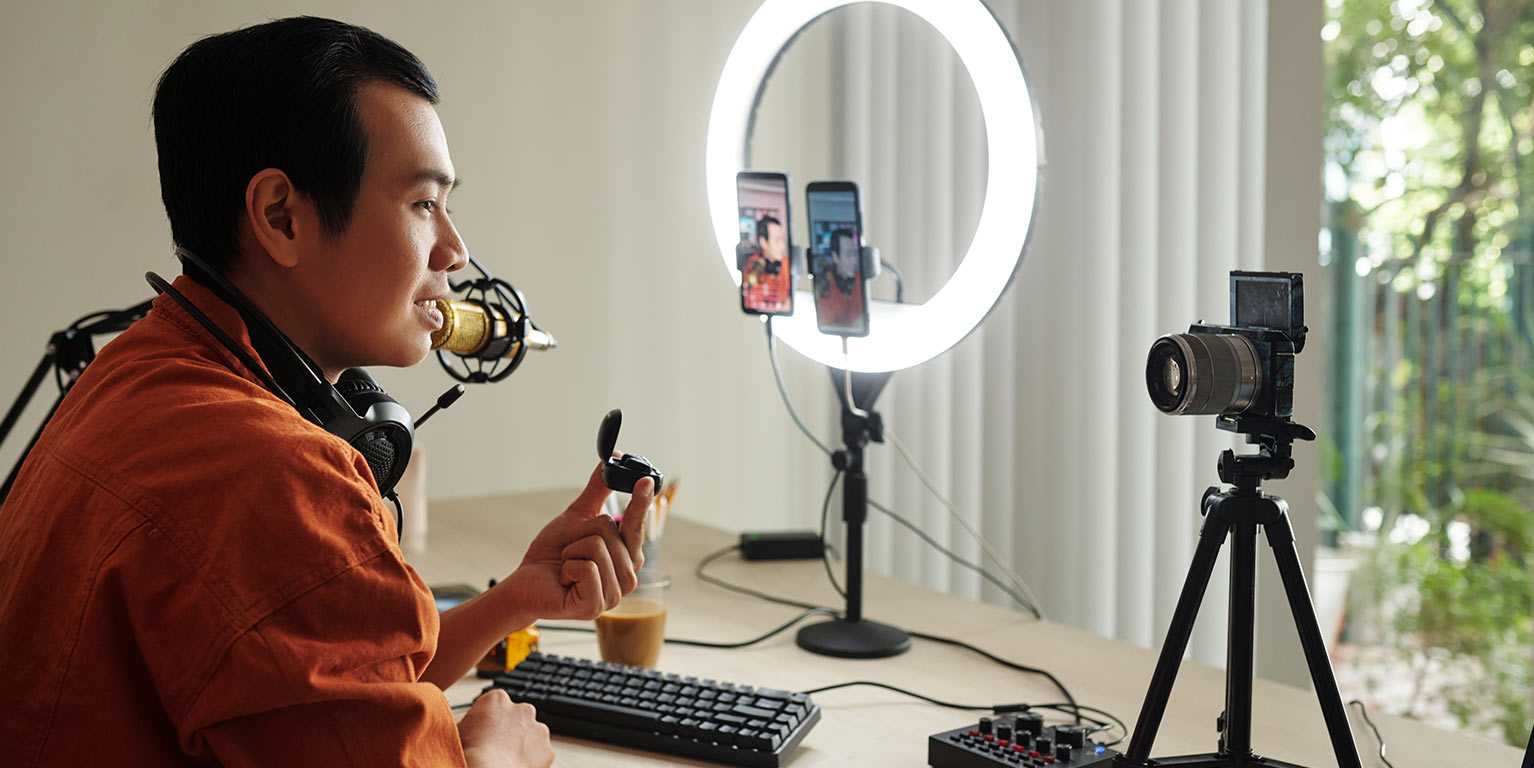
Flexibility is a necessity in the modern professional world, and often, that includes the ability to webcast from different locations.
Whether you're travelling or working from an office space, it's important to maintain consistent lighting quality to preserve the effectiveness of your communication.
Tip for Mobile Lighting
- Look for the best available natural light source, such as a window or outdoor opening. Natural light is soft and flattering, but be mindful of changing light levels throughout the day.
- Choose your webcasting location wisely. Avoid sitting with your back to a window or intense light source, as it can create an undesirable backlight.
- Use portable lighting solutions, such as mini LEDs or ring lights that can be easily transported and set up wherever needed.
Managing Lighting in Different Environments
Moving between different environments may mean you'll need to quickly adapt your lighting setup.
Here are some tips for tackling common challenges:
- Reduce glare from screens or reflective surfaces by strategically positioning your lighting, and avoiding direct angles.
- Adjust your camera's white balance to ensure colours remain natural under different types of light.
- Carry a portable diffuser to soften overly intense light sources and avoid harsh shadows.
Keep in mind that the principles of lighting remain the same, even when you change environments.
What changes is how you apply them and the resources at your disposal.
Fortunately, PQM.net is here to help you understand.
We offer a turnkey service specially designed for you.
Conclusion
Just like the content of your webcast, the lighting you use communicates a message about your brand and attention to detail.
Investing in good lighting and knowing how to adapt it to changing environments is essential for effective visual communication.
Lighting isn't just about visibility but also a powerful tool for shaping your audience's experience.
The importance of lighting in webcasting cannot be underestimated.
It's the key to producing videos that capture attention, convey undeniable professionalism, and keep your audience engaged.
By following the advice outlined in this article, you ensure that you always present your best profile, regardless of where your broadcast takes place.
Stay bright, stay professional, and above all, stay connected!

